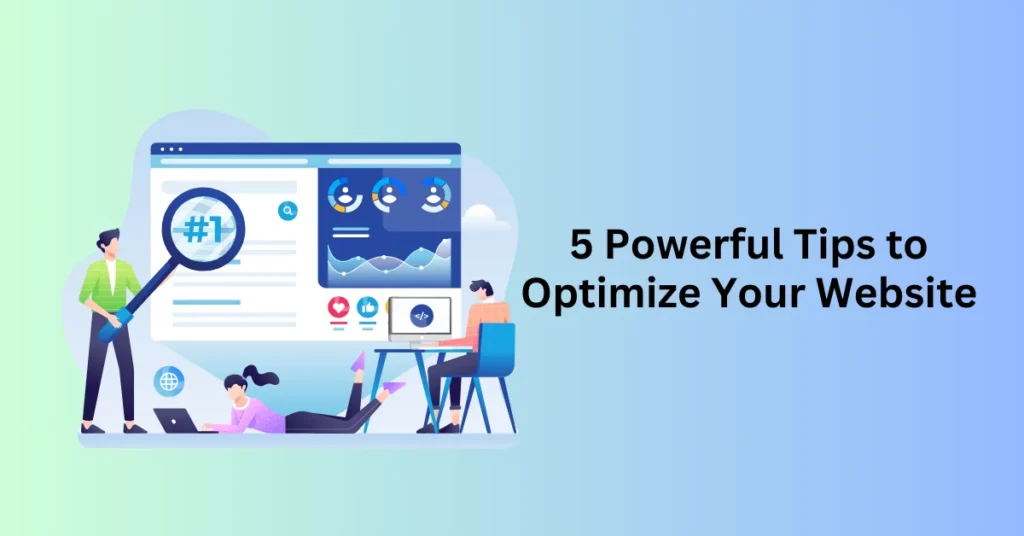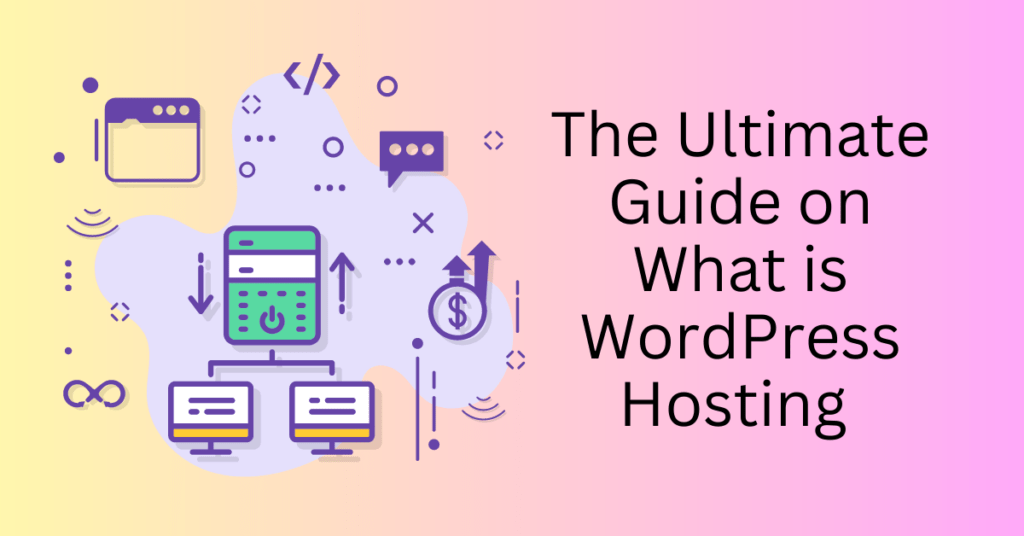Your website is more than just an online presence—it’s your top salesperson, available 24/7 to connect with customers and drive sales. But like any great salesperson, it needs regular fine-tuning to perform at its best. As 2025 begins, it’s the perfect time to revamp and optimize your website and turn it into a sales powerhouse with just a few strategic updates.
This year, make your website a priority. A well-optimized, professional site builds trust, impresses visitors, and converts them into loyal customers. While the idea of optimizing your website might seem overwhelming, having a clear plan and the right tools can make the process seamless.
Here’s how to set your business up for success in 2025 by combining smart goal-setting, promotional strategies, and optimize your website.
How to Optimize Your Business Website
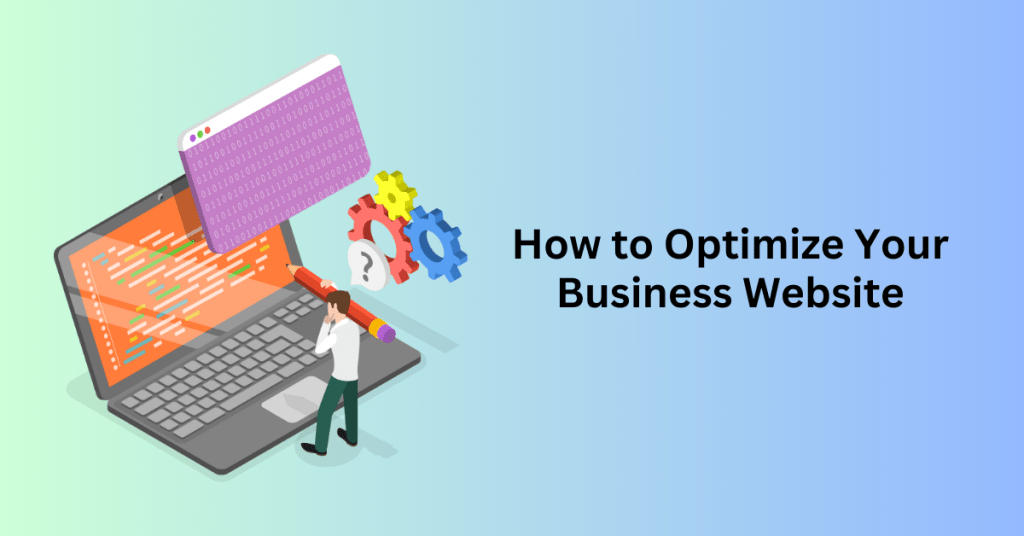
The year 2025 presents an exciting chance to refine your online presence, cater to evolving customer expectations, and position your business for sustainable growth. Let’s illustrate this with an example: imagine you run a small home gardening business. While the example centres on gardening, the strategies discussed here are adaptable to any industry.
By implementing these five actionable tips, you can attract your target audience, build trust, and generate quality leads.
1. Prioritize User Experience (UX) to Optimize Your Website
Picture this: your home gardening website features an impressive range of garden tools, décor, and seedlings. Despite the high quality of your products, sales are underwhelming. Customer feedback reveals that poor navigation, sluggish load times, and a lack of intuitive design are driving visitors away. These frustrations result in higher bounce rates and fewer conversions.
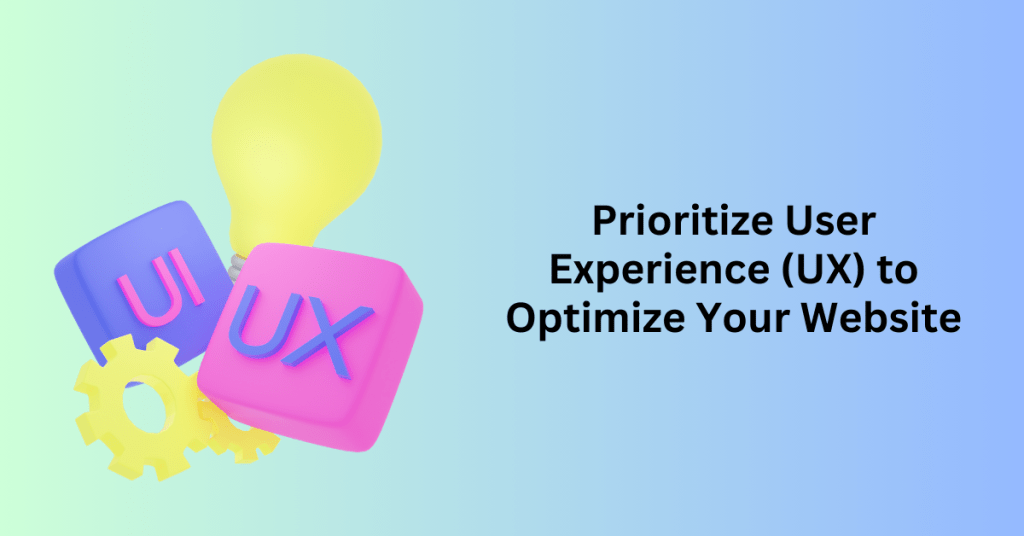
What to Focus On:
Intuitive Design
Creating a user-friendly website begins with an intuitive design. Structure your site logically, incorporating easy-to-navigate menus that guide visitors effortlessly. Organize your products into clearly defined categories such as “Garden Tools,” “Outdoor Décor,” and “Plant Care,” ensuring that customers can quickly locate what they’re searching for. Additionally, include a prominently displayed search bar to further streamline the user experience and help visitors find specific items without hassle.
Speed Optimization
A fast-loading website is crucial for keeping users engaged and boosting conversions. To optimize your site’s speed, compress large images, enable browser caching, and remove any unnecessary code that could slow down loading times. Studies reveal that pages loading within one second achieve a 40% conversion rate, while even a slight delay can significantly impact this figure. By prioritizing speed optimization, you create an effortless browsing experience that encourages customers to stay on your site and complete purchases.
Decluttering the Experience
A clutter-free website ensures a seamless shopping journey for your customers. Eliminate distractions or irrelevant elements that may overwhelm visitors or obstruct their path to purchasing. The goal is to create a streamlined experience that allows users to explore and buy the products they need without unnecessary interruptions.
Action Tip:
Regularly assess your website’s usability with tools like heatmaps, which visually display user behaviour. Analytics platforms can also highlight common obstacles users face. For example, slow loading speeds or difficult-to-navigate menus. Pairing this approach with hosting providers like Bluehost can ensure your website is fast, reliable, and mobile-friendly—meeting the expectations of today’s digital-savvy customers.
2. Fortify Your Website Security
In today’s digital landscape, cyber threats are more pervasive than ever. A 2024 survey of Chief Information Security Officers revealed that ransomware and malware account for a staggering 79% of all cyber-attacks. For businesses, even a single breach can erode customer trust, tarnish brand reputation, and incur steep financial losses. Strengthening your website’s security is no longer optional—it’s a critical investment in your business’s future.

What to Focus On:
SSL Certificates
Secure Socket Layer (SSL) certificates are essential for protecting the data exchanged between your website and its users. By encrypting sensitive information such as login credentials, payment details, and personal data, SSL certificates safeguard against interception by malicious actors. Beyond security, websites with SSL certificates also build trust with their users, as the visible “https://” prefix and padlock icon in the browser address bar reassure visitors of a secure browsing experience.
Regular Backups
Unexpected accidents or cyberattacks can jeopardize your website’s data, making regular backups a crucial part of your security strategy. Implement a reliable backup system to ensure your data is safe and easily recoverable in case of an emergency. Services like Bluehost’s backup and restore tool, such as CodeGuard, offer secure, automated backup solutions that allow you to quickly restore your website when needed, minimizing downtime and data loss.
Real-Time Security Monitoring
Proactive security measures are vital to protecting your website from potential threats. Install security tools and plugins that actively monitor for vulnerabilities, providing features like malware scanning, firewalls, and intrusion detection systems. These tools act as a robust frontline defense against cyberattacks. For WordPress users, plugins like Wordfence and Sucuri are excellent choices to enhance security and maintain peace of mind.
Action Tip:
Stay Updated:
Regularly update your content management system (CMS), themes, and plugins to patch known vulnerabilities. Outdated software is a common entry point for hackers, so timely updates are essential to maintaining a secure website.
Choose a Secure Hosting Provider:
Ensure your hosting provider includes advanced security measures such as periodic security scans, firewalls, DDoS protection, and robust backup options. For example, Bluehost offers a comprehensive suite of security tools designed to keep your website and customer data safe.
3. Optimize Your Website for Mobile Devices
In today’s mobile-driven world, users expect websites to offer a seamless experience across all devices. With mobile-first indexing now a priority for Google, non-responsive websites not only risk alienating a significant portion of their audience but also suffer from lower search engine rankings. Optimizing your site for mobile is essential to staying competitive and accessible.

What to Focus On:
Mobile Responsiveness
With mobile users now accounting for over 60.67% of web traffic, ensuring that you optimize your website adapt seamlessly to different screen sizes is essential. Whether your customers are shopping for gardening tools, décor, or seedlings, it’s important to provide an intuitive browsing experience that works perfectly on smartphones and tablets. A responsive design ensures that users can easily navigate your site, regardless of the device they’re using, keeping them engaged and more likely to complete a purchase.
Mobile-Friendly Features
To optimize your website for mobile users, focus on implementing touch-friendly buttons with sufficient spacing to avoid accidental clicks. Prioritize vertical scrolling rather than horizontal navigation, as it offers a more natural and user-friendly experience on smaller screens. Simplify your menus and forms, reducing unnecessary steps and ensuring a smooth, frustration-free browsing experience that encourages users to explore your site further.
Speed Optimization for Mobile
Mobile users expect quick load times, and delays can result in high bounce rates. To improve your mobile site’s performance, optimize for mobile network speeds by compressing high-resolution images without compromising quality. Additionally, minimize the use of heavy scripts and unnecessary design elements that can slow down load times. Research shows that pages taking longer than 3 seconds to load experience significant bounce rates, so ensuring a fast and efficient mobile experience is crucial to retaining users and boosting conversions.
Action Tip:
Use tools like Google’s Mobile-Friendly Test to evaluate your website’s performance across a variety of devices and screen resolutions. These tests will identify usability issues and suggest areas for improvement.
By optimizing for mobile, you not only cater to the expectations of your audience but also improve your website’s visibility on search engines. A mobile-friendly site helps retain visitors, reduces bounce rates, and increases the likelihood of conversions—ensuring your business thrives in a mobile-first era.
4. Refresh Content and Revamp Your SEO Strategy to Stay Relevant
Keeping your content fresh and your SEO strategy effective is essential for maintaining visibility and engaging your audience. Outdated content and poorly optimized SEO can prevent users from finding your website, limiting traffic, reducing engagement, and hampering your ability to convert visitors into customers.
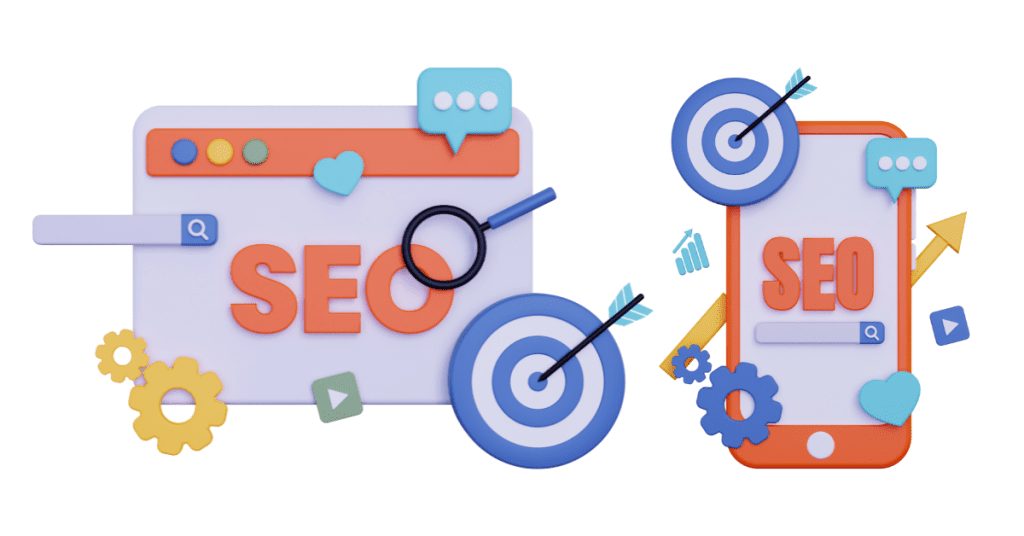
What to Focus On:
Content Updates
Regularly updating your website’s content is essential for maintaining its relevance and authority in search engine rankings. Search engines favor sites that provide fresh, high-quality content, so it’s important to review and update older blog posts, product descriptions, and landing pages. Enhance your content by adding new visuals such as photos, videos, and infographics to make it more engaging. Additionally, thoroughly research your niche to ensure consistency in tone, accuracy, and depth. For instance, a gardening website could include fresh content on topics like irrigation techniques, seasonal gardening tips, eco-friendly practices, and plant care, keeping your site informative and valuable to your audience.
SEO Enhancements
To improve your site’s search engine ranking, it’s important to conduct thorough keyword research and align your content with current trends and search behaviors. Incorporate popular terms that your target audience is searching for, such as “best garden tools for beginners,” “affordable seedlings online,” or “organic gardening hacks.” Optimize website on-page elements like headers, meta descriptions, alt tags, and URLs to enhance your site’s visibility on search engines. Craft clear, engaging meta descriptions that encourage users to click through to your site, improving both click-through rates and overall SEO performance.
Internal and External Linking
Enhance your website’s structure and navigation by interlinking related blog posts, product pages, and other resources. This not only improves the user experience but also helps search engines better understand your site’s hierarchy. Additionally, incorporate external links to credible sources within your content, and encourage backlinks from reputable websites in your industry. These efforts will help increase your site’s authority, boosting its credibility in the eyes of both search engines and users.
Action Tip:
Leverage tools like the Yoast SEO WordPress plugin to optimize your content effectively. Yoast provides actionable recommendations, such as improving keyword density, readability, and meta tag optimization.
Conduct regular SEO audits using tools like SEMrush or Google Analytics to identify weak areas, track performance, and adjust your strategy. Additionally, focus on long-tail keywords (e.g., “how to start a home garden for beginners”) and evergreen topics to generate consistent traffic over time.
5. Plan and Optimize Your Website for Scalability
As your business expands, your website must be prepared to handle increased traffic, especially during peak periods like holidays or promotional campaigns. A sudden surge in visitors—say, during a festive rush for indoor gardening products and décor—can overwhelm your website, leading to slow load times or even downtime. These issues can frustrate users, harm your reputation, and result in lost revenue. Planning for scalability ensures your website performs reliably as your business grows.
What to Focus On:
Scalable Hosting
Choosing a scalable hosting plan is crucial for ensuring your website can grow alongside your business. Scalable WordPress hosting adjusts key resources such as bandwidth, storage, and server capacity to accommodate increasing traffic. With a reliable hosting solution, you can rest assured that your website will remain fast and functional, even during periods of high traffic. This flexibility allows your site to handle growth seamlessly, providing a positive user experience regardless of how much your audience expands.
Content Delivery Networks (CDNs)
Content Delivery Networks (CDNs) play a vital role in improving website performance by distributing your content across servers located around the world. This reduces the distance between users and your data, easing the strain on your server and accelerating load times, particularly during traffic spikes. For example, Bluehost integrates Cloudflare CDN with its hosting plans, helping to optimize speed and performance for global audiences. Using a CDN ensures that your website remains accessible and responsive, regardless of your visitors’ locations.
Code Optimization
Regularly reviewing and optimizing your website’s codebase is essential for maintaining fast performance. Streamline scripts, remove redundant code, and compress files to eliminate inefficiencies that could slow down your site. By keeping your website’s code lean and optimized, you ensure that it runs smoothly, loading quickly and providing a seamless user experience. Code optimization helps improve both your site’s performance and search engine rankings by reducing load times and enhancing overall functionality.
Action Tip:
Monitor Performance Metrics:
Track critical performance indicators such as load times, server response rates, and traffic patterns using tools like Google PageSpeed Insights or GTmetrix. These metrics help you anticipate growth and identify areas that need improvement.
Choose a Growth-Ready Hosting Solution:
Select a hosting provider that supports seamless expansion without sacrificing performance. Bluehost, for instance, offers:
- Free CDN integration with Cloudflare to enhance global performance.
- Advanced security tools to safeguard growing websites.
- 24/7 customer support tailored to WordPress users.
- Hassle-free migration services to help you transition smoothly as your needs evolve.
By investing in scalable solutions and proactive performance management, your website can grow alongside your business, providing a seamless and reliable experience for every visitor, no matter how large your audience becomes.
Bonus Tip: Audit and Refresh Your Website’s Core Elements
As we step into 2025, a comprehensive website audit is essential to ensure your digital storefront aligns with the latest trends and performs optimally. Over time, websites tend to accumulate outdated content, broken links, and design inconsistencies, all of which can negatively affect user experience, SEO, and your conversion rates. Regularly refreshing these core elements ensures your site remains engaging, relevant, and effective in driving results.
What to Focus On:
Fix Broken Links
Broken links not only frustrate users but also negatively impact your SEO rankings. It’s essential to regularly check for dead links using tools like Google Search Console, Ahrefs, or online link checkers. Once identified, either replace or redirect these links to ensure visitors can smoothly navigate your site. Repairing broken links helps maintain a seamless browsing experience and preserves the integrity of your website’s structure, ultimately benefiting both user satisfaction and search engine optimization.
Update Core Pages
High-traffic pages like your homepage, product pages, and contact information should be regularly reviewed. Refresh them to stay relevant. For example, on your gardening website, ensure product descriptions are accurate. Incorporate trending keywords like “2025 home gardening tips” to optimize for current search trends. Also, keep your calls-to-action clear and up-to-date. This helps drive conversions effectively.
Modernize Visuals
Outdated visuals can make your website look neglected and unprofessional. It’s important to replace old images and videos with fresh, high-quality alternatives that better represent your brand and offerings. Consistency in design is key—align fonts, colours, and spacing with modern design trends to create a polished, cohesive look. This not only enhances the aesthetic appeal of your website but also helps convey trust and professionalism to your audience.
Refresh Blog Posts
Older blog posts can lose relevance over time. It’s important to revisit and update them. Add current data, insights, and engaging visuals. For example, on your gardening blog, feature trending topics. You could cover native plant landscaping, sustainable gardening practices, or DIY irrigation systems. These topics resonate with eco-conscious audiences in 2025. Updating blog posts with new keywords and optimized meta descriptions also helps. This improves your search engine visibility. It ensures that your content remains discoverable and relevant to your target audience.
Action Tip:
Use website auditing tools like SEMrush, Screaming Frog, or Sitebulb to comprehensively analyze your site’s performance, identifying areas that need updating. Create a schedule for regular audits—quarterly reviews can help you stay ahead of issues and keep your site in peak condition.
By maintaining a dynamic and up-to-date website, you’ll not only enhance user experience but also build trust and credibility, positioning your brand as a leader in your industry. Regularly auditing and refreshing your site is an investment in sustained growth and long-term success.
Final Thoughts: 5 Powerful Tips to Optimize Your Website
As we step into 2025, your website should be at the heart of your business strategy. A well-optimized website is more than just a digital storefront. It’s a powerful tool for attracting, engaging, and converting your audience. By implementing these tips, you can improve your website’s performance, security, and scalability. This will help drive more traffic and achieve your business goals.
A polished, secure, and user-friendly site does more than meet expectations. It surpasses them. It establishes your brand as credible, innovative, and ready for growth. Whether optimizing for mobile, refreshing your SEO strategy, or planning for scalability, every step brings you closer to a thriving online presence.
Hence, you should start to optimize your website now.
